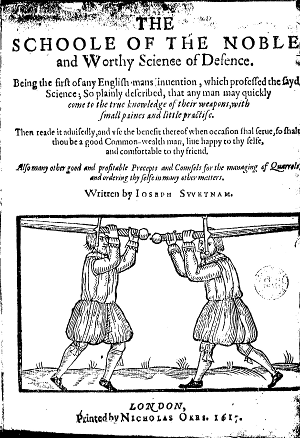A&S
Swetnam Preface to the Reader
This is part of an ongoing project to sumarize and provide SCA focused commentary on The Schoole of the Noble and Worthy Science of Defence by Joseph Swetnam, published in 1617.
For links to the other sections of the Swetnam Project please go here.
I am using this facsimile: http://tysonwright.com/sword/SwetnamSchooleOfDefence.pdf for the project.
As I said in my previous post I’ll be breaking Joseph Swetnam’s manual down by sections. This is for the first three sections (kinda). It includes title page, dedication, and first preface.

Prince Henry 1594 – 1612
I’ll throw a few pictures in to break up the 1700 word post.
First off we have our standard title page with a bit of aggrandizing. We have our dedication to the Prince Charles, the brother of his dead Patron. I wonder if he was hoping to snag himself a new patron with this. Nothing surprising here.
Then we have our introduction for those who aren’t his patron. It’s entitled: “An Epistle unto the common Reader”. The intro to the reader is fourteen pages long. It includes such comments as that he isn’t a scholar and has never attended university. But he seems to consider himself good enough anyway. The next five pages seem to be his trying to prove that you don’t need a university education to quote random things. The only problem is that he’s not very good at it. He is more than heavy handed with his metaphors – which go on forever – and he approaches his point in a slow spiral so you know about where he’s going, but he never seems to get there. He mixes quotes from scripture with morality plays and popular ballads. It very much seems like a first year university student trying to pretend he’s learned by spewing as much information onto the page as possible.
